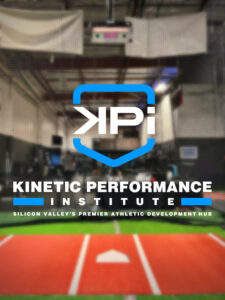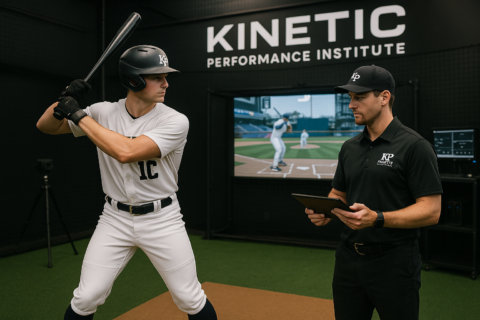Why The Current Model of Player Development is Broken
The game of baseball is in constant evolution, but it is historically much slower than the other sports. Baseball is rooted in tradition, maybe because it is America’s game or maybe it has something to do with it being the oldest of the sports invented in our country. What we do know is that the system that was organically created to help players develop is broken. The reason why it is broken is not because of what common observers might think, but because of the silo approach that is taken by most involved in the process. Putting up walls, creating lanes of expertise, and not having an integrated system holds back many athletes looking to move up in the game. A modern player development system, and the system that will prevail with this generation of athletes, is one that is completely integrated and takes into account every need of every athlete.

What’s wrong with having a specialist for each area of development?
There are 2 large problems, amongst many smaller ones, with having the silo’d approach to player development. The first problem is each of the coaches of each speciality think they are the most important part of the process. The personal skill coach (hitting or pitching), the high school/college/pro field coach, the personal trainer, the parents, the travel ball coach, and the medical team all feel that their role is the most important role for the athlete to develop and be successful. Because of this ego based dynamic, each one of these coaches in the process tries to take possession of the athlete’s process and they load the athlete up with their focus and philosophy. The problem presents itself when the athlete becomes overloaded with all these different stressors presented to them by all the different areas of their development. Here are some common examples that athletes go through on a weekly basis…
- Private Skill Coach – Demands weekly lessons at a high pay rate and often undermines the field coaches. The private coach presents their own philosophy and protocols the athlete must follow for success. If success does not happen, the private coach usually blames the field coach and states more private lessons are needed, leading to the vicious cycle of the lesson model that plagues modern player development.
- High School Coach – The high school coach is tasked to win games and often overvalues his/her impact on that outcome. They feel their philosophy and focus on the field is the most important for an athlete and they often don’t consider the other areas of development when designing weekly routines and individual considerations for each athlete.
- Personal Trainer – This coach values the strength training of the athlete above all else. Very often they are not connected with what is happening and/or the success/failures of the athlete on the field. They have a narrow view of the process because of their limited scope, so they often prescribe what they know, instead of what is happening with the athlete at that moment
- Travel Coach – Depending on the time of the year or the regional rules of high schools in the athlete’s area, the travel coach might be with the athlete more than the high school coach. The travel coach is usually motivated by making money, so decisions are often made in that scope instead of the scope on what is best for the individual athletes. The travel schedule is usually fairly intense and demanding and can pull an athlete away from the other areas of development.
- Parents – Parents have the enviable job of filtering all of these different areas for the athletes. Parents are inevitably biased towards their kids desires and sometimes the level of play their child is at. They are spending thousands of dollars on all these different areas, much of the time without a long term plan or perspective on what actually works in this disjointed process.
- Medical (Athletic trainer, physical therapist, chiropractor, medical doctors) – This area is often an understated part of this process, but it can be one of the most consequential. Without an integrated development system in place, there usually is a loose understanding on who refers out to medical specialists. And if those referrals aren’t targeted and logical, an athlete can often get passed around and/or given improper advice. The current medical system is setup to defer and delay in the name of cost saving. Most medical doctors will give a blanket rest period without actually diving deep on an issue and that can be costly in many different ways for an athlete.
As displayed above, there are a lot of hands in the cookie jar for the modern day athlete. Every one of those aspects of the process has their own, unique thoughts, philosophies, egos, and experiences they draw from. With all of these different chefs in the kitchen, it is unavoidable to have a disjointed process and there will always be a lot of push and pull between each entity. This is why the silo’d approach to athlete development is so flawed and disjointed… it really has no other outcome in this setup.

What an integrated athlete development system looks like
As evidenced above, there are a lot of moving parts to get under control for high level athletes. This is why it is so integral to get into a comprehensive system that can encompass all important areas for the athlete. A system like this creates a common mindset, philosophy, and communication across the board. This kind of structure is exactly what the athletes need as they develop and navigate the different landscapes they will encounter. Without this kind of integrated approach, athletes get lost in all the voices and stress that everyone provides them. With this kind of a system, all of that communication and stress can get consolidated across the spectrum and everyone can work together.
At KPI we have created an incredible athlete development system that caters to every aspect a developing athlete needs to achieve. Here is how we take each part of the system and use them to make one large athlete development machine…
- Athlete – The athlete is the center of this system and has to be. This only works if the athlete invests in all areas and is the one driving the process.
- Parents – The parents job is to provide the resources needed and to support the athlete as they pursue their dreams
- Skill Coaches – We have some of the very best skill coaches in the industry coaching all ages at KPI. In our development programs we have our skill coaches work hand-in-hand with the strength coaches, and often times, coaches perform both functions in our building. There is constant communication and flow between the skill coaches and other areas.
- High School/Travel Coaches – We are in constant communication and outreach to as many high school and travel coaches that will have it. We make a concerted effort to update the field coaches in all parts of our training. We are building systems to make this more seamless and we also hold a coaching clinic every January where we bring coaches from all levels together with a theme of working together and a collective mindset.
- Strength Coaches – We employ strength coaches at KPI and the strength program is the hub of everything we do here. The strength coaches are all former athletes that understand the importance of working hand in hand with the skill side. We cross reference assessment notes taken by a trainer and then use that information to build out a skill and strength program for the athlete.
- Medical – We have an internal Return To Training program we use to pull athletes out of general population that are experiencing some level of pain. We give them a structured system to follow. If they do not progress, we refer out to our medical partners for the next layer of treatment. If the issue is serious enough, we have relationships with the best orthopedics in the area and we know how to navigate the sometimes tricky process of getting proper treatment. We then work with our physical therapy partners to get returning athletes everything they need to heal and get back to training and the field.

Conclusion
There is a better way out there. On the surface this is simple… would an athlete rather be in a chunky setup where each part of the process has their own thoughts, beliefs, and philosophies? Or would an athlete flourish in a one-stop-shop system where there is a common thread and open communication running through every aspect? The answer is simple, a system that has every aspect working together and in conjunction with each other will outshine the old way every time. Are You Ready?


